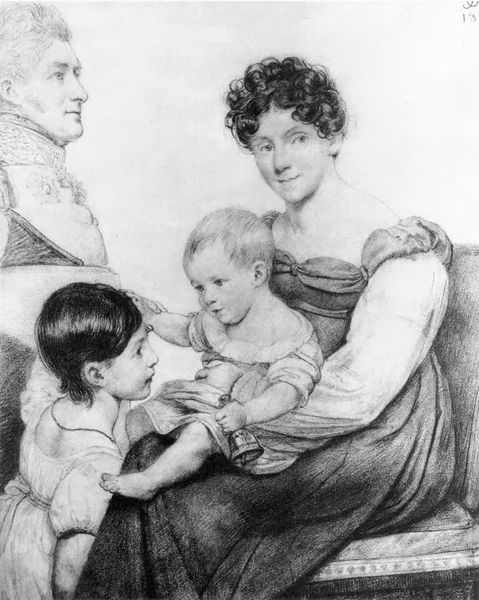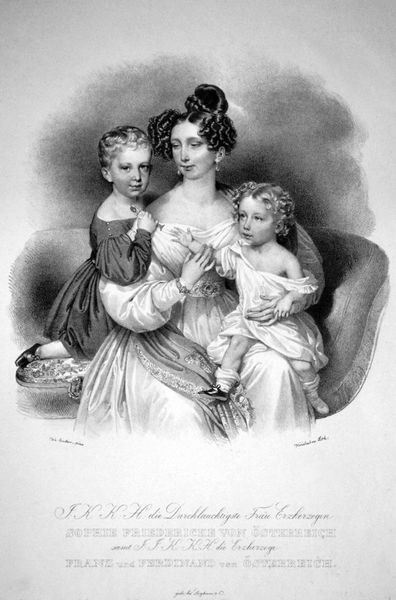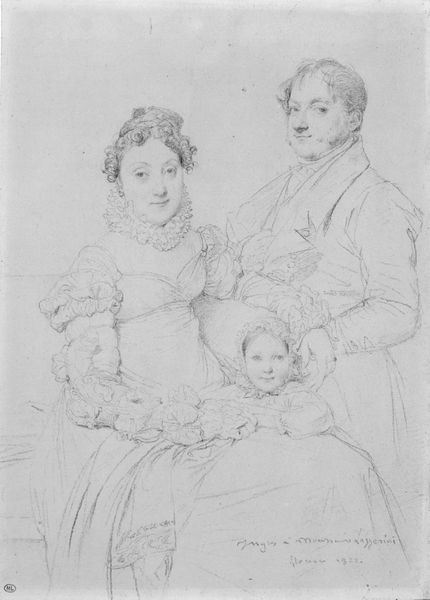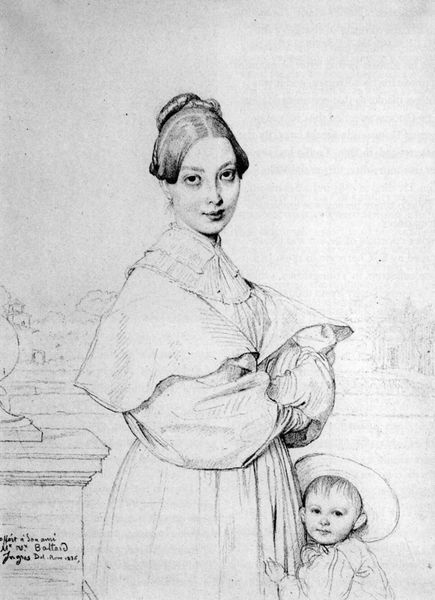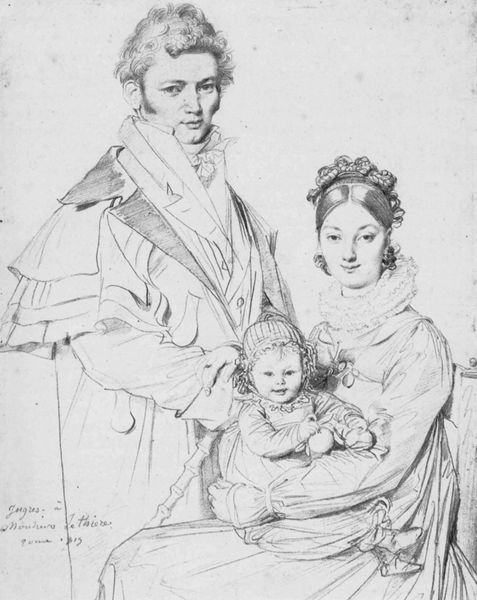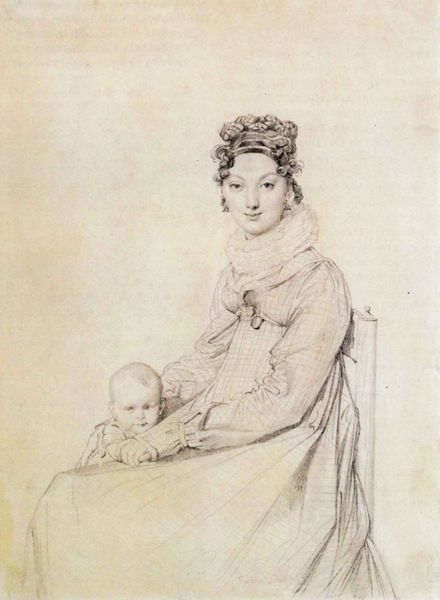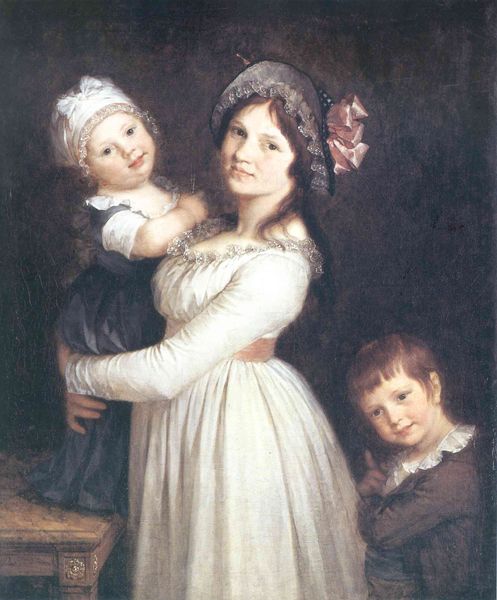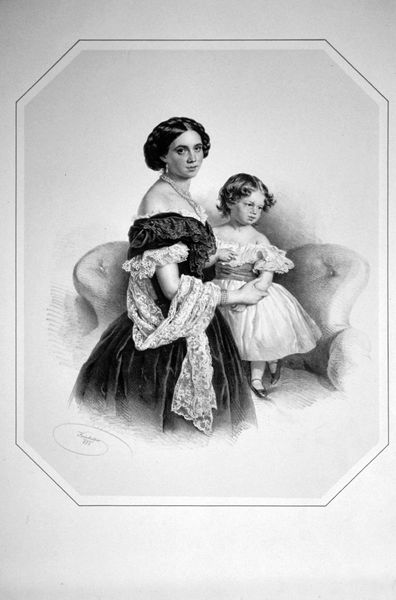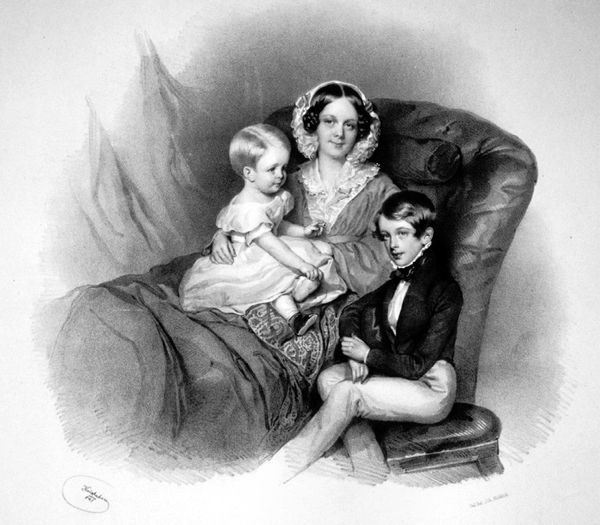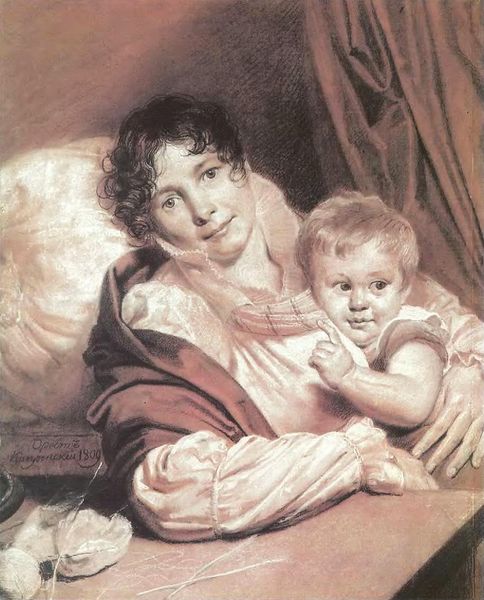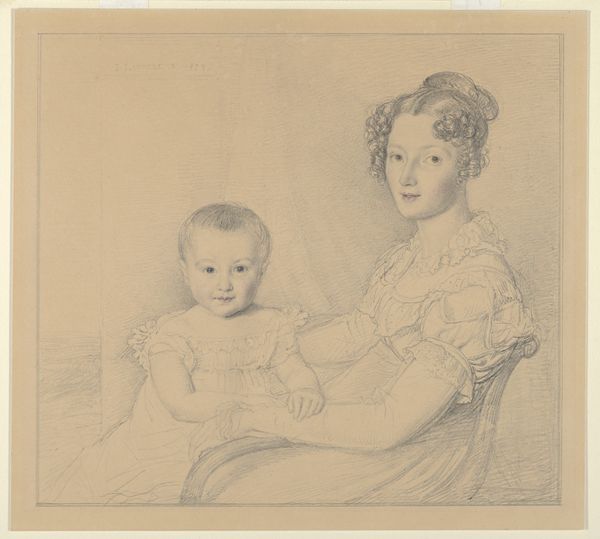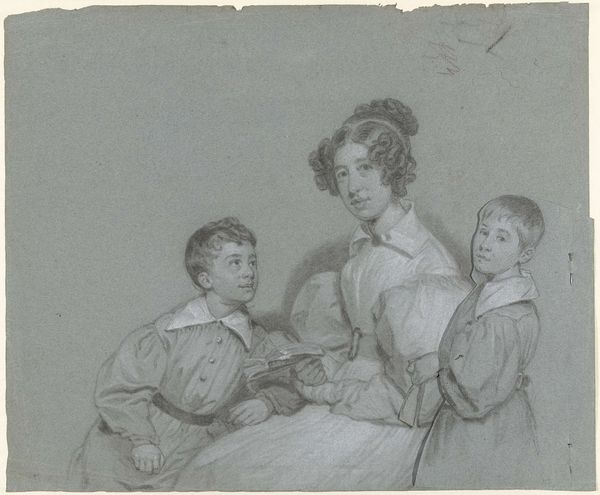
Madame Johann Gotthard Reinhold, born Sophie Amalie Dorothea Wilhelmine Ritter, and her two daughters, Susette and Marie
0:00
0:00
jeanaugustedominiqueingres
Private Collection
drawing, charcoal
#
portrait
#
drawing
#
neoclassicism
#
charcoal drawing
#
charcoal
Copyright: Public domain
Curator: Let’s turn our attention to this delicate drawing titled "Madame Johann Gotthard Reinhold, born Sophie Amalie Dorothea Wilhelmine Ritter, and her two daughters, Susette and Marie." It is believed to be by Jean-Auguste-Dominique Ingres. Editor: A strikingly formal family portrait. The precise, linear quality of the charcoal lends the image a sense of composed dignity— almost melancholic. Curator: That formality is, indeed, very typical of Ingres' neoclassicism. It draws heavily upon the aesthetics of ancient Greece and Rome, prioritizing line and form to emphasize idealized beauty. You will notice this clearly in the balanced composition of the mother and children and their calm, restrained expressions. Editor: True. Ingres is masterful at rendering details, especially in the textures of their clothing, which adds a kind of three-dimensionality that almost anticipates photography. Considering the period and the expense of such a work, can we consider how the act of commissioning and presenting portraits contributes to how families presented themselves? What did that mean for society at that moment? Curator: It certainly shaped perceptions. Commissioned portraits like this one were statements of social status. Displaying images like these reinforced class structures within society, dictating what families were perceived as valuable, worthy and respectable, solidifying Ingres’ patronage of the burgeoning bourgeoisie. Editor: I appreciate the interplay between what appears to be spontaneous sketching, against these very refined renderings. Curator: Yes, Ingres used drawings to study the model. I love the freedom allowed him as a draftsmen as it offered such flexibility within his career to allow quick and easy portrait commissions of visiting tourists in places such as Rome, it helped grow his business. Editor: Well, examining it has provided insight into Ingres’ artistic skills but also, more broadly, into portraiture's cultural function and artistic license in earlier society. Curator: Agreed. Looking closely not only illuminates technique but reveals much about power, wealth, and the careful construction of public persona throughout history.
Comments
No comments
Be the first to comment and join the conversation on the ultimate creative platform.
